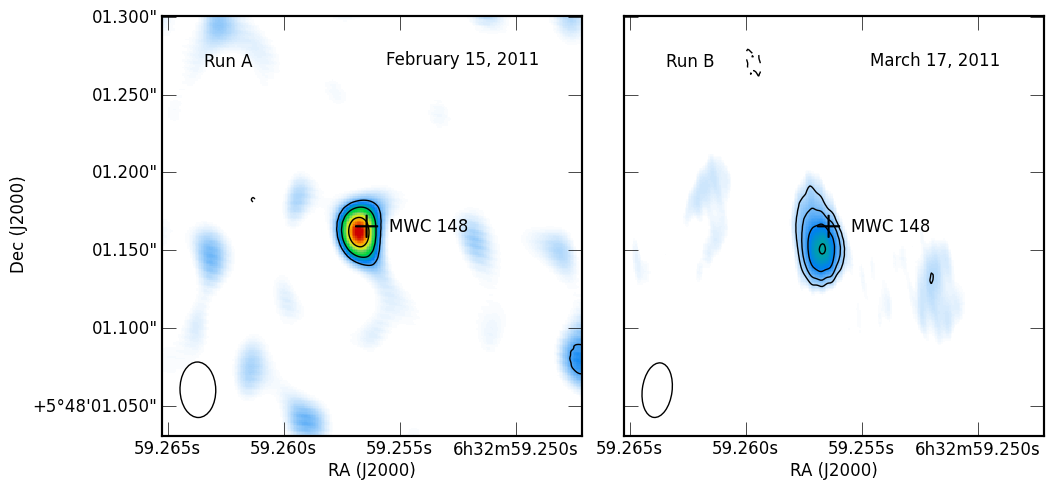Daily Image
30-11-2011The extended radio emission of the gamma-ray binary HESS J0632+057
| Submitter: | Javier Moldon |
| Description: | Radio observations at the highest resolution is a powerful tool to identify some of the most mysterious objects in our Galaxy. Among these are sources of TeV (tera electron Volts, 10^12 eV) radiation, discovered by gamma-ray telescopes working at the highest energies. HESS J0632+057 is a variable TeV gamma-ray source, with likely lower energy counterparts in X-rays, optical (the massive Be-type star MWC 148), and sometimes in the radio. The source spectral energy distribution and the likely positional coincidence with the Be star indicates that HESS J0632+057 is a new member of the selected class of gamma-ray binaries, double stellar systems that emit most of their radiation in the gamma rays. So far only a few similar systems have been known. In early 2011 Swift/XRT reported increased X-ray activity from HESS J0632+057, while the VERITAS and MAGIC collaborations reported increased activity at energies above 0.2 TeV between 7-9 February 2011, confirming the very high energy active state. This was an excellent opportunity to observe the source with the European VLBI Network (EVN) and measure its position with accuracy of about a milliarcsecond (mas), since radio activity was expected to increase as well. A few days after the trigger, the source was observed thanks to the rapid response and flexibility of the e-EVN. Seven telescopes participated in the Target of Opportunity observations on 15 February 2011: Effelsberg, Jodrall Bank, Medicina, Onsala, Torun, Westerbork and Hartebeesthoek. The observing frequency was 1.6 GHz. Each telescope streamed 1024 Mbps to the correlator in real-time. A second ToO run was conducted 30 days later with the whole array in a disk-recorded session to monitor the source evolution after the outburst. The radio counterpart of HESS J0632+057 was detected with the VLBI technique for the first time, and the observed small size confirms the non-thermal nature of the radiation (the brightness temperature exceeds a million degrees). The measured source position, with errors of the order of 1 mas, confirms without doubt that the source of the radio emission is in close orbit to the Be star MWC 148. The radio source appears compact during the outburst, but after 30 days it appears extended, and with the peak of the emission outside the binary orbit, showing that a flow of relativistic particles have traveled at least 20 AU, as expected for these systems. These results give further support that HESS J0632+057 is a binary system, and it is a new member of the selected class of gamma-ray binaries. In the figure the two 1.6 GHz EVN maps of HESS J0632+057 are shown. The cross indicates the optical position of the Be star MWC 148. The 1-sigma rms is 50 and 13 microJy/beam, and the total flux density is 410 and 180 microJy, for run A and B, respectively. The contours start at 3-sigma level. In the second run, the radio emission appears displaced to the South, away from the star. Authors: Javier Moldón, Marc Ribó, Josep M. Paredes (Departament d'Astronomia i Meteorologia and Institut de Cičncies del Cosmos (ICC), Universitat de Barcelona (IEEC-UB)) |
| Copyright: | Javier Moldon |
| Tweet |  |
